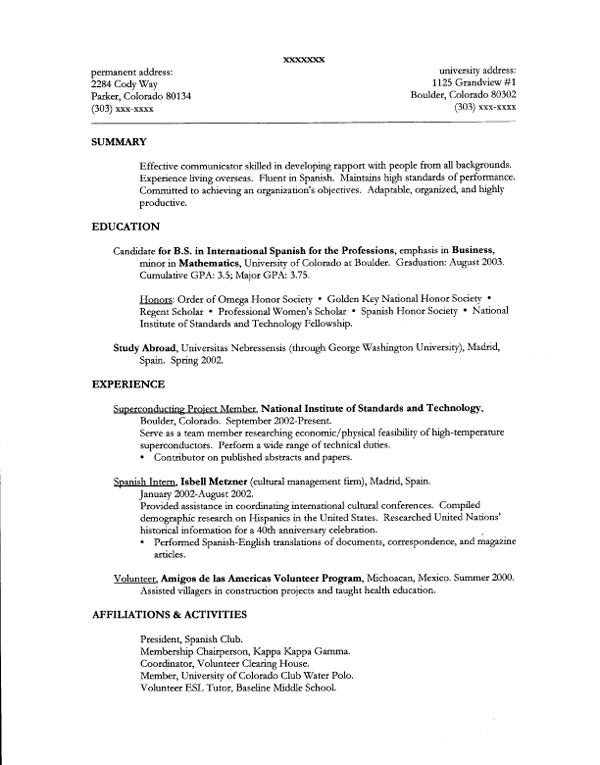We talked about the different types of resume formats and we briefly discussed each. Now, we are to look at the chronological (reverse) chronological format. In the previous article, we discussed that a chronological resume presents oldest (least relevant) to newest (most relevant) work experience while the reverse chronological resume is in vice versa. This is to group your work experiences to help employers identify developments and experiences in your previous professions. In this article, we are going a bit more detailed in terms of this type of resume format.
In this type of format, your skills and talents might not be the best to be highlighted. What you need to consider in having as content are:
- Education
- Licenses
- Work Experience/s
- Project Experience/s
By highlighting these, your employer will have an easier skim at your resume and therefore, will be aware firsthand on where they should put in you in the company. When an employer looks at your resume and is curious or interested about your work experience, he/she will be more interested in looking at the more previous jobs you’ve had than in the past. This is why a reversed chronological resume is handy.
If you have been part of a worldly known company and have been part of a very good industry, this might be the perfect format for you. Highlight your experiences, promotions, achievements, licenses, certificates, etc.
How is this format effective in terms of getting a job?
Personally, it’s not as easy as utilizing a functional resume but having yours setup like this might be for a different reason. People who utilize this most often are:
- Applicants who are looking for a promotion
- Applicants who are looking to have the next corporate step in their current job
- Applicants who would transfer to a big company/industry
In simpler terms, this format is used to showcase work experience to get a higher position or to transfer to a better/higher company or department.
Writing a Reverse Chronological Resume Format
Of course, there also are dos and don’ts in writing in this format. In writing for your education, be sure to include all schools/universities/colleges that awarded you a degree. DO NOT include those whom you transferred from. Do not also put where you have studied in high school. The things you would want to include are:
- Your degree
- Major, Minor, and area of concentration
- Academic Achievements
- Academic Projects
- Extra-Curricular Activities
In writing for your work experience, be sure not to include jobs you have had that are almost 10 years past unless, you put that there for a good reason. You can put full-time and part-time jobs as long as they are relevant in you being hired. List it in reverse chronological order newest to oldest. Include things like:
- Company name
- Job Title/Position
- Major Tasks and Accomplishments
- Promotions
- Awards/Recognitions
- Projects (Business-related ones)

Avoid dictating your roles and responsibilities as much as possible. List down accomplishments, projects, awards, goals, and ideals instead. These are the bells to employers’ ears and the type of people who are proactive in terms of making the company grow is their favorite.
Other points to remember:
- Too many words can bore your employer, try to be concise and direct as much as possible
- Use bullet points instead of constructing in paragraphs for them to immediately know the things they should
- You can add one section called “additional working experience” or “related to work experience” which highlights few of the extra talents that you have that might be relevant to the post your are rooting for
- Do not include jobs you’ve worked for less than 6 months or educational experience that you have not finished
Having a reversed chronological format is a no-brainer that applicants who utilize them aim for a better job or better position that why they had now or they’ve previously had. By listing down experiences in education and in work, and by highlighting the latest, employers can easily dictate what your role could be in their company.
Feature Image from: template.net